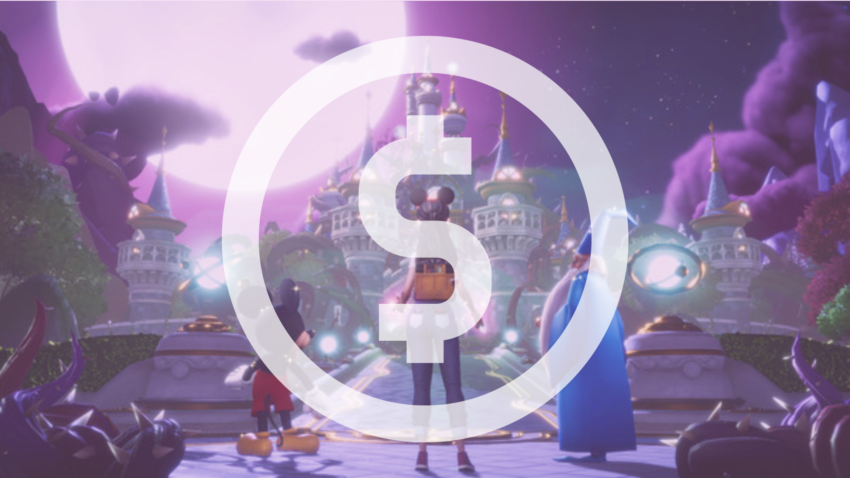Disney Dreamlight Valley promised to become free-to-play (FTP/F2P) for audiences in December 2023…but they just went back on their word. Keep reading to learn about what went wrong, criticisms of the game being microtransactioned to death, and see fan reactions to the news.
Disney Dreamlight Valley is available on Steam, Nintendo Switch, PlayStation 4 & 5, and Xbox Series S & One (incl. Game Pass).
The Takeaway
- Disney Dreamlight Valley (DDV) has been in Early Access since Sept 2022
- DDV promised to go free-to-play for their full launch in Dec 2023
- Disney/Gameloft retracted the free-to-play offer and are making DDV full price at launch
- Fans of DDV claim that the level of microtransactions in the game are not acceptable for a full price title

Disney Dreamlight Valley: Some Backstory
Disney Dreamlight Valley is a cozy life sim produced by game developer Gameloft in partnership with, you guessed it, Disney. It blends elements of crafting, decorating, and exploration with the added bonus of questing for and alongside familiar Disney and Pixar characters like Mickey Mouse, Cinderella, and Buzz Lightyear.
Disney Dreamlight Valley has settled at user reviews of Very Positive (all time)/Mostly Positive (recent) on Steam, and many prolific gaming sites were ranking it around 7-8/10 upon release.
Early Access Launch
Disney Dreamlight Valley has been in Early Access since its “soft launch” in September 2022. Early access in video games refers to a development and distribution strategy where a game is made available to the public before its official release.
Players can purchase or access the game in its unfinished state, providing developers with funding and player feedback to refine and enhance the game during its development process. It allows players to experience the game early, but they should be aware that it might be incomplete or contain bugs.
This is a bit of a touchy subject because a media behemoth like Disney doesn’t have the excuse of needing to rely on the early access system, which essentially means releasing an incomplete game for players to pay for the privilege to beta test.
Early access is typically reserved for smaller indie companies with unknown IP who can’t afford long lead times and may need to inject some capital into the project before it is 100% polished and ready for wider release. Disney can also afford to hire QA testers. There is no need to leverage end users for this process.
This speaks to many of the issues of Disney Dreamlight Valley, leading right up to the “disappeared” F2P offer. Namely that it is a cash grab by an entertainment conglomerate that should have the wherewithal to use a meagre bit of their $20+ billion yearly profits to deliver a complete, polished game to their audience.
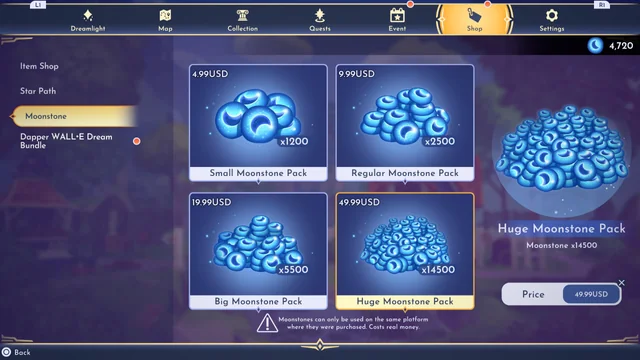
Microtransactions
One thing to note is: no game developer owes players their game for free. If Gameloft had not made false promises to deliver Disney Dreamlight Valley free-to-play later on, no one would have batted an eye.
However, Disney Dreamlight Valley was clearly set up with a free-to-play structure in mind. The game offers different priced tiers for the base game, ongoing paid DLC releases, and a dizzying amount of microtransactions, ranging from the ability to progress faster by purchasing in-game currency to the inability to access new characters unless you pay for them.
This is very typical of a F2P game. They focus on giving the majority of players free access, knowing that word of mouth and FOMO is a powerful selling point to draw in new audiences. Players who want to get more out of the game can pay, but most won’t.
The players who spend money on microtransactions, particularly in otherwise F2P games, are known as “whales.” It basically means that game developers only need to convince 1% of active players to spend money, knowing that those who are prone to doing so will spend a lot. It can actually be quite a predatory technique, as developers may simulate the rush of gambling or tap into addiction mechanisms in your brain to exploit the most vulnerable users.
Here are some additional resources on the problems with microtransactions and the exploitation of “whales” that I suggest you read:
- Why It’s Scary When 0.15% Mobile Gamers Bring In 50% Of The Revenue
- What’s Wrong with Microtransactions in Video Games?
- It’s Not Just Loot Boxes: Predatory Monetization Is Everywhere
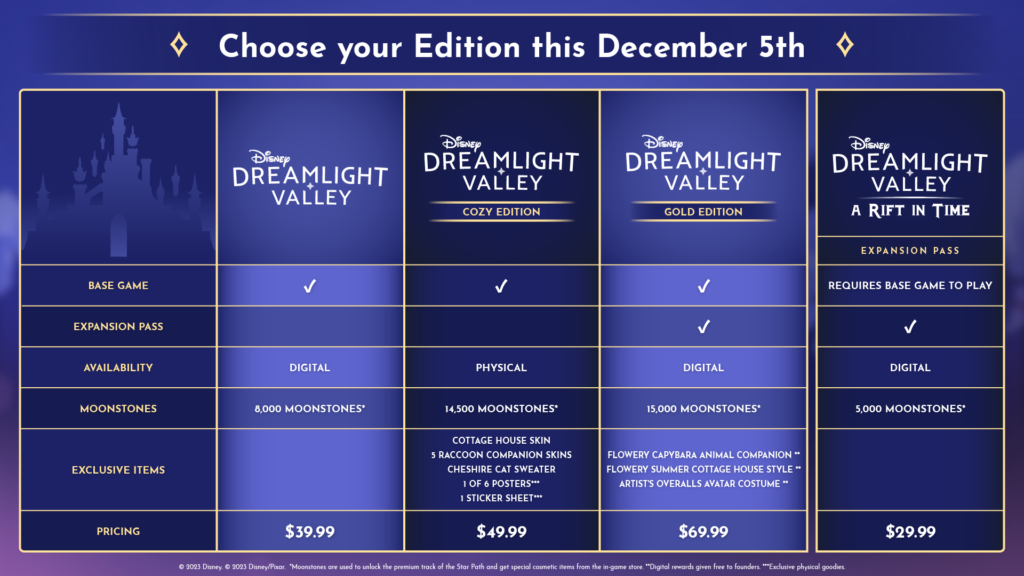
Disney Dreamlight Valley Free-to-play No More
On October 27, 2023, the Disney Dreamlight Valley blog released the following statement:
AN UPDATE ON FREE-TO-PLAY
As we look ahead to the official launch, with the learnings we’ve gained from Early Access, we’ve made the decision to remain a paid game for the foreseeable future. This means we will not make the transition to be a free-to-play game when we leave Early Access on December 5th.
This choice ensures that Disney Dreamlight Valley will be able to continue delivering on a premium game experience for all players. It’s important to us that we maintain our promise to keep delivering free content updates that add new characters, realms, clothing, furniture, and more surprises to your Valley. Purchases requiring moonstones will remain optional, fair, and match the level of quality players have come to expect. Players will still be able to collect free Moonstones via Dream Snaps and Chests, or optionally choose to purchase them.
That’s the gist of it. Despite saying since launch that Disney Dreamlight Valley would switch to a free-to-play model on December 5, the game will remain a paid product “for the foreseeable future.”
This has left a lot of fans with a bad taste in their mouth. Obviously, no one likes to be misled, but equally as important is that no player-base likes to feel like they are being squeezed for every penny they have.
Fan Reactions to the Disney Dream Valley Free-To-Play Rollback
Fans are understandably upset by Disney Dreamlight Valley walking back it’s F2P offer. Here are some highlights:
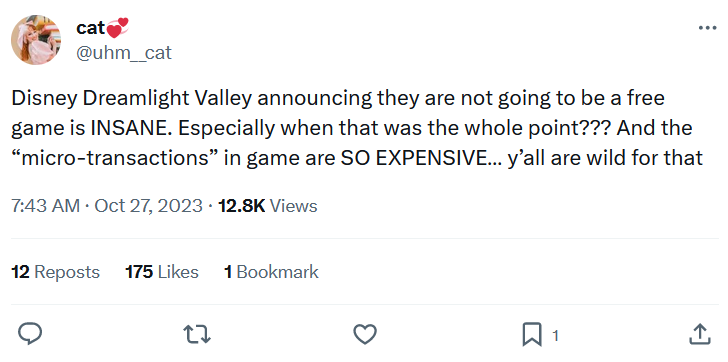
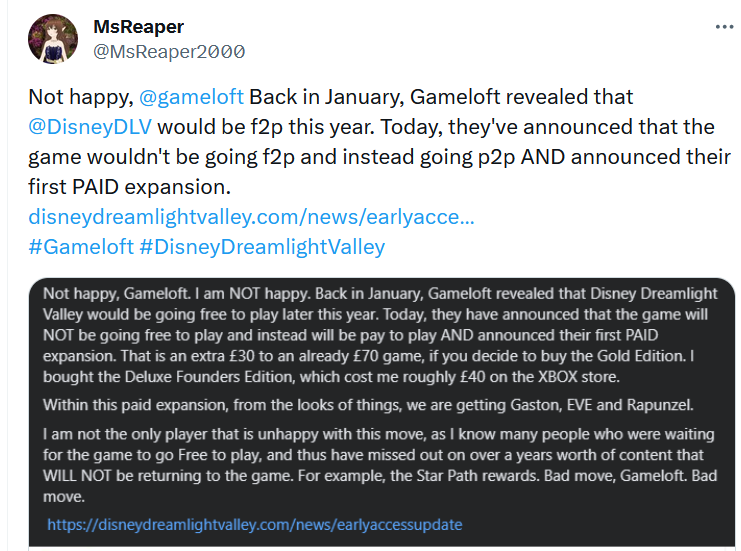
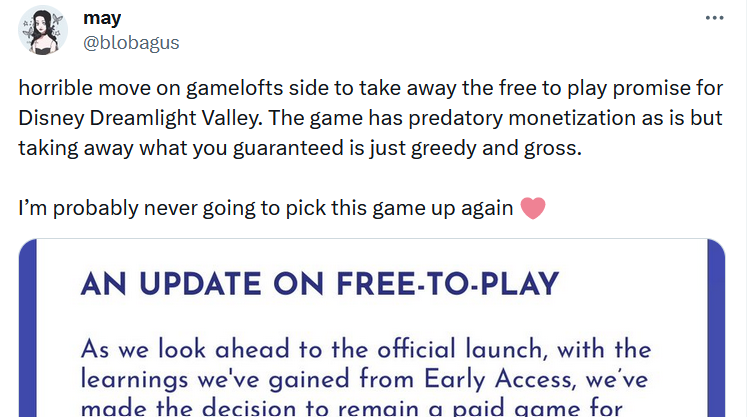
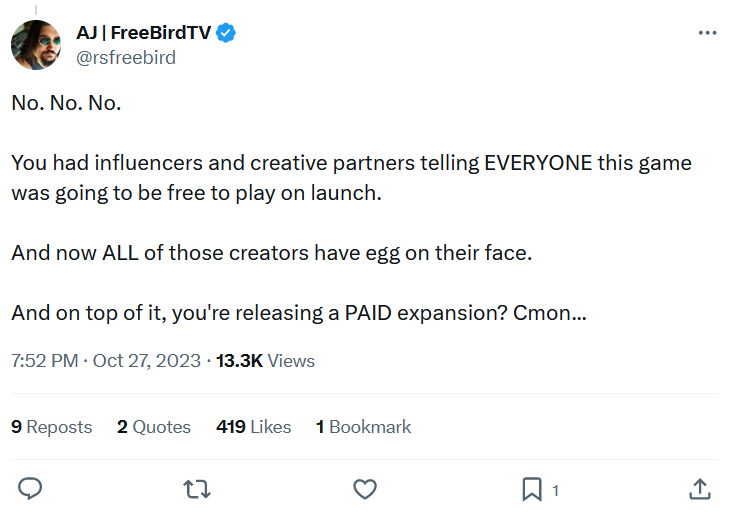
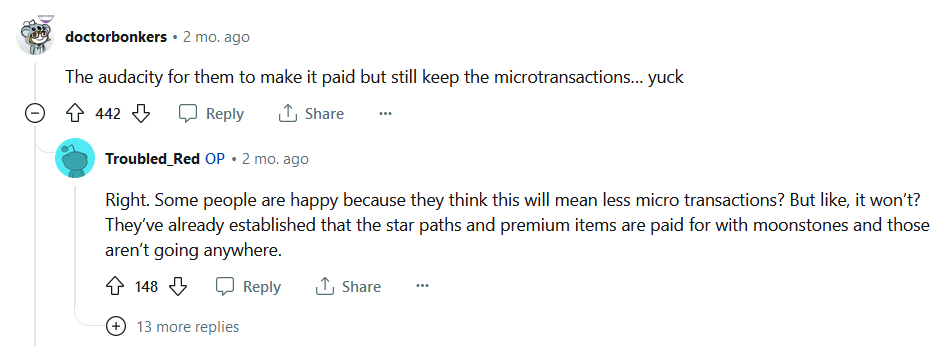

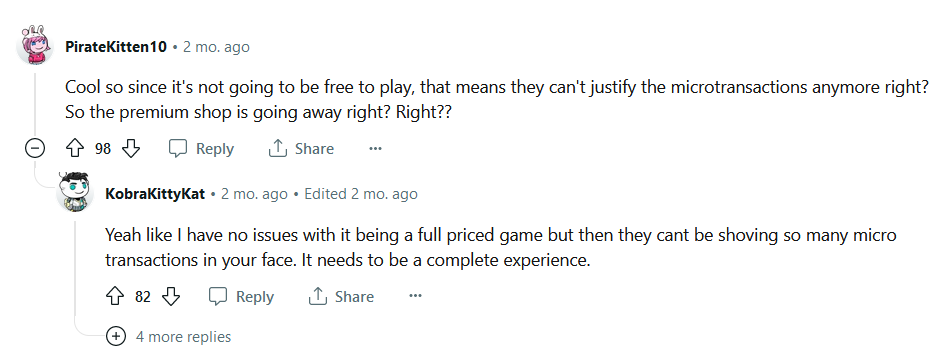
Conclusion
Disney isn’t the first mega corporation to mislead consumers and abuse microtransactions—and they won’t be the last. I genuinely feel for the people who already bought the game and now say they wouldn’t have supported it had they known what the future would look like.
What do you think? Did you buy Disney Dreamlight Valley and now regret it? Will you buy it on December 5th; has this news soured your opinion of the game? Or have you paid/will pay for the game and are satisfied with your purchase? Let me know what you think on social media or in the comments!
Stay cozy, gamers!
